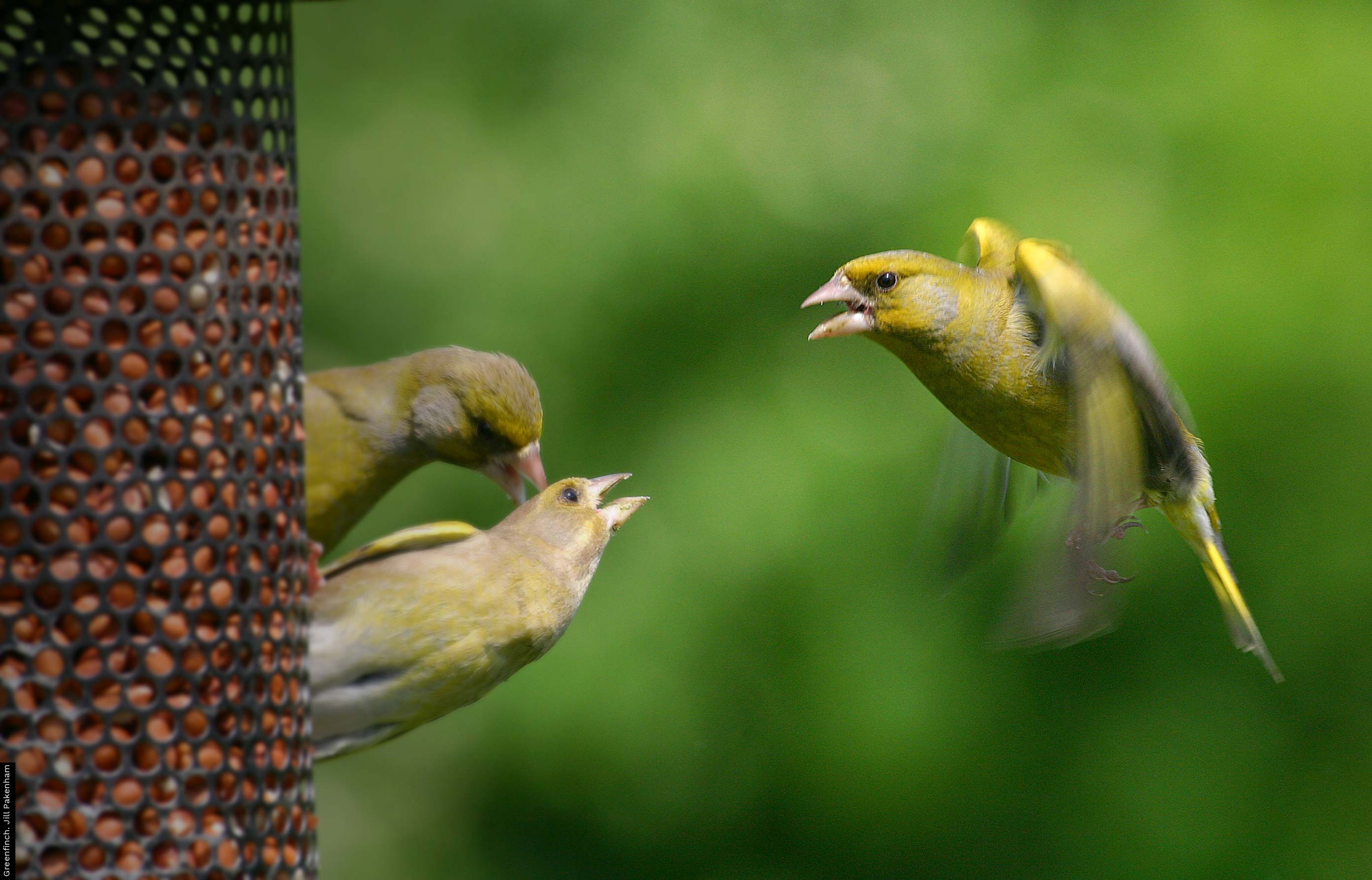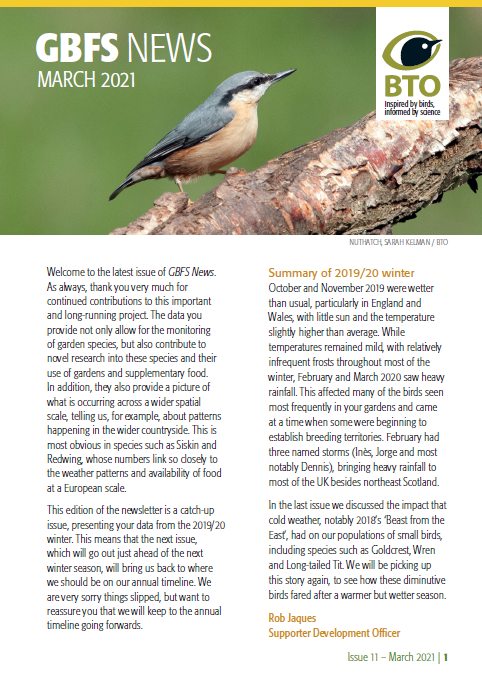Publications
GBFS data are published regularly in a number of different forms, ranging from peer-reviewed scientific papers to annual press releases.
GBFS News
GBFS News is an annual newsletter that rounds up GBFS results from the preceding winter, discusses emerging trends from garden bird tables, highlights fascinating facts about garden birds, and brings the latest news from participants’ gardens.
GBFS News 2019-20
Archive issues
GBFS News was launched in 2009. Relive previous winters and find out how things have changed.
GBFS News 2018-19
GBFS News 2017-18 (PDF, 6.98MB)
GBFS News 2016-17
GBFS News 2014-15
GBFS News 2013-14 (PDF, 1.93MB)
GBFS News 2012-13
GBFS News 2011
GBFS News 2010
GBFS News 2009
Scientific papers
The cornerstone of the GBFS is to produce publishable scientific data. Over recent years a number of papers that have used GBFS data have been published revealing intriguing patterns at bird feeders and the role of gardens within our wider living landscape.
Charting populations
Twenty one species have shown significant increases in their occurrence at garden feeders between 1970 and 2000. Moreover, in several species, GBFS counts correlate strongly with relative population size during the previous breeding season. Therefore, the GBFS can provide an indication of changes in bird populations at large.
Feeding frenzy
The scale of bird feeding is now enormous, with some 60 thousand tonnes of bird food provided annually in the UK. The GBFS has charted birds coming to our feeders and bird tables as the scale of this provision has increased.
Boom and bust
An important natural food of birds during winter is the seed of beech trees, known as ‘beechmast’. In some years, so called ‘mast years’, beechmast is abundant in the countryside, whereas in other years it is relatively scarce. When the latter occurs, GBFS data show that several species use food supplements in gardens in greater number. These include Great-spotted Woodpecker, Woodpigeon, Great Tit, Coal Tit, Nuthatch, Jay and Chaffinch.
Sparrowhawks make a comeback
Organochlorine pesticides decimated the UK Sparrowhawk population in the 1960s so at the start of the GBFS this species was a rare sight in gardens. Changes in farming practices enabled Sparrowhawks to recover and their increase in number coincided closely with the 40 years of the GBFS.
New statistical methods
Researchers at the University of St Andrews used the GBFS dataset to develop a new statistical modelling approach. They also investigated how this method might allow a more robust examination of the interaction between Sparrowhawks and their songbird prey at garden feeding stations.
Garden feeding impacts bird communities
By comparing GBFS data with bird food advertisements in RSPB's Birds magazine over a 40 year period, it was shown that increased diversity of food corresponded with an increase in the diversity of birds visiting feeders. In the 1970s feeders were dominated by House Sparrows and Starlings, whereas today a greater range of species are commonly seen using feeders.







Share this page